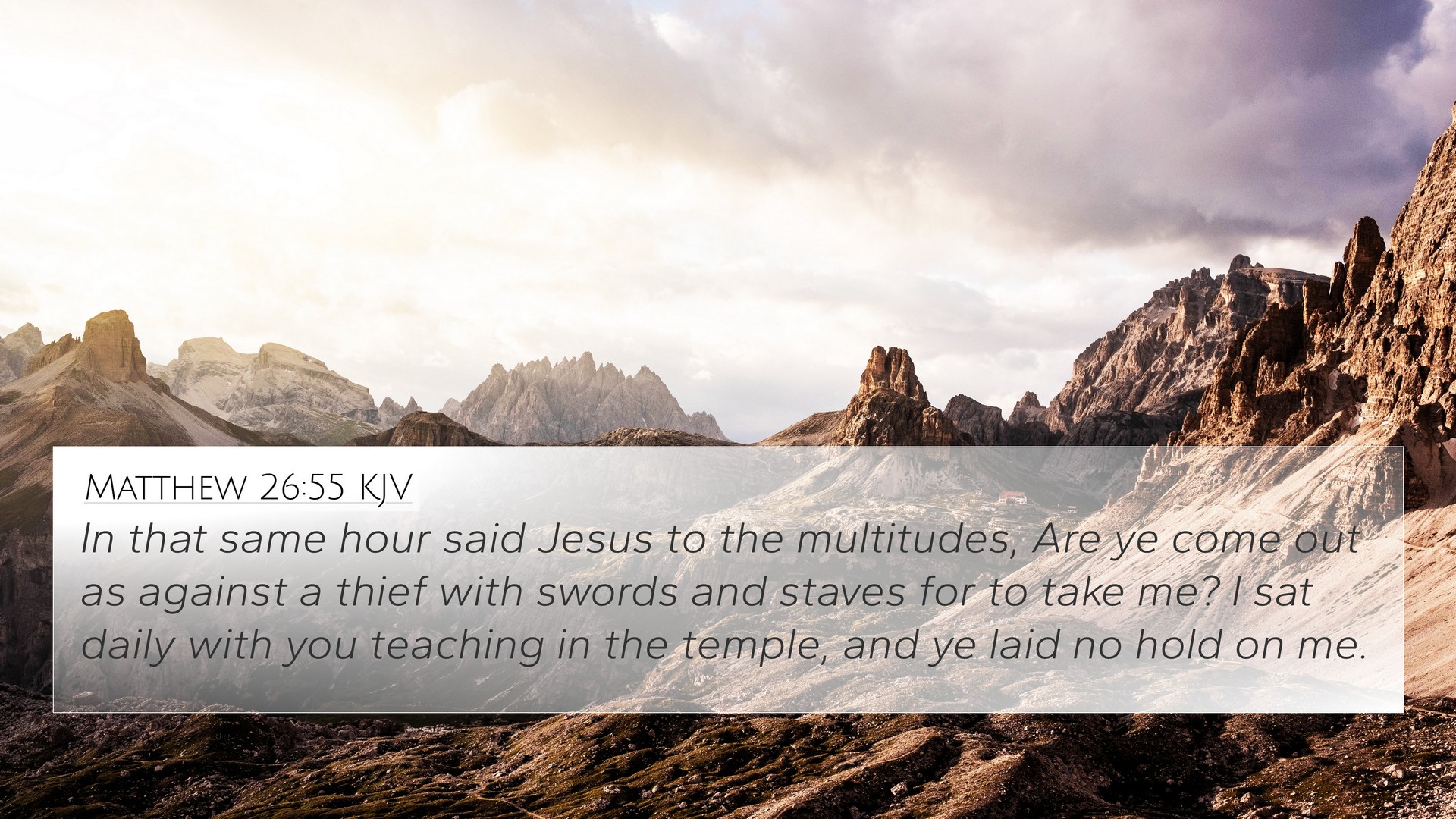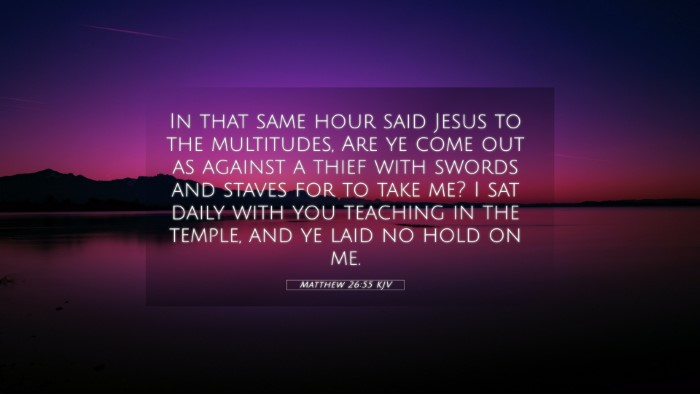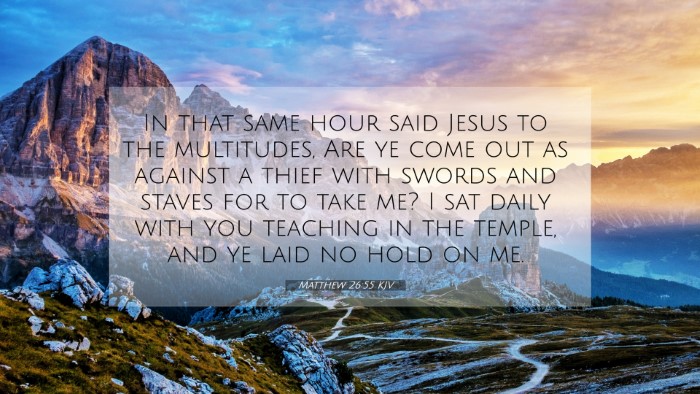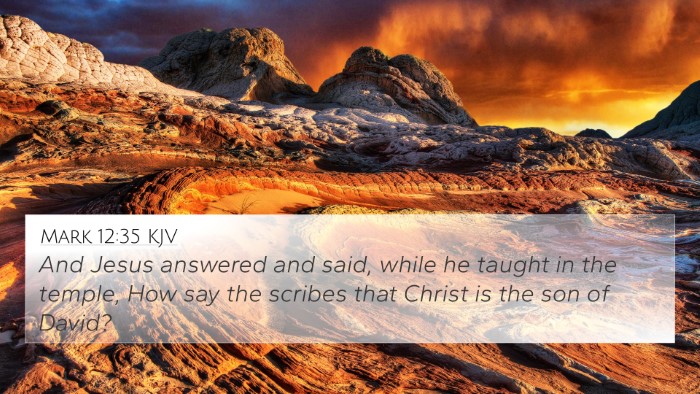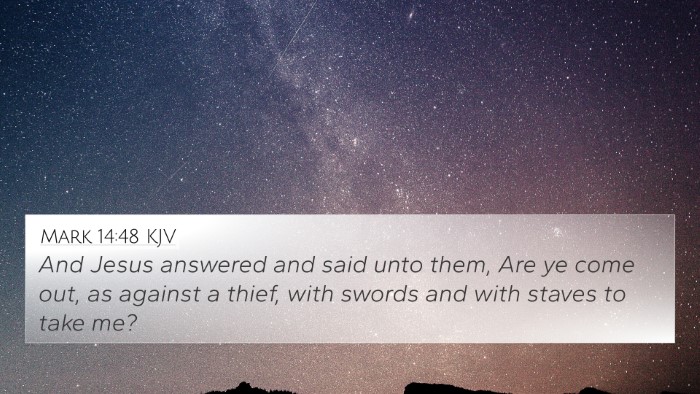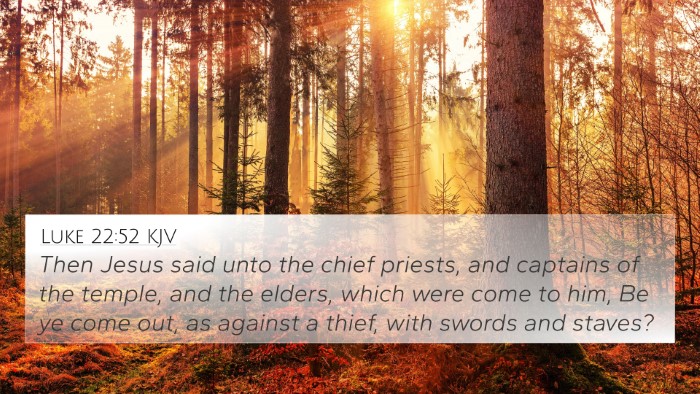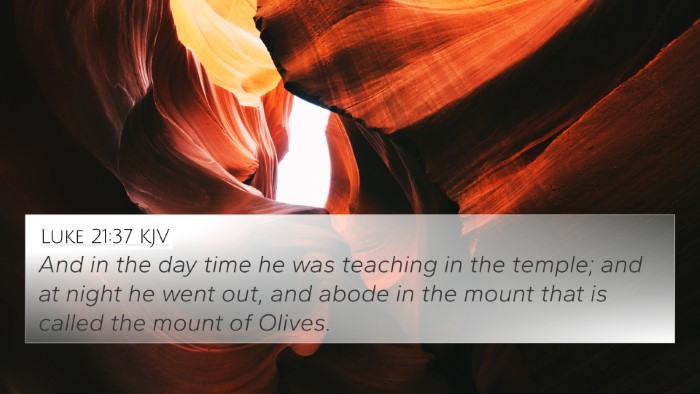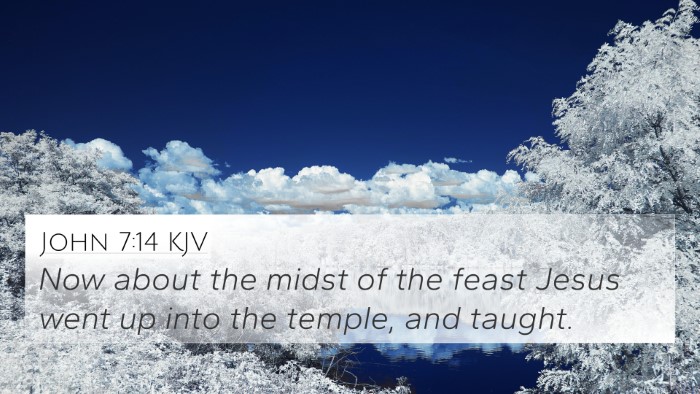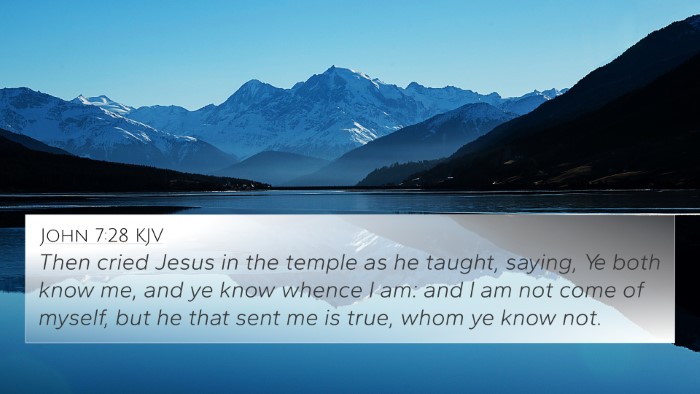This verse captures a pivotal moment during the arrest of Jesus. The content draws on insights from renowned public domain commentaries, presenting a combined interpretation that elucidates its meaning.
Context and Setting
- Historical Context: This moment occurs in the Garden of Gethsemane, shortly after the Last Supper. Jesus faces arrest, revealing the gravity of the situation.
- Comparative Analysis: This verse links to numerous Biblical passages, exploring themes of governance, authority, and the prophetic nature of Christ’s mission.
Exegesis and Analysis
According to Matthew Henry, this passage indicates Jesus’ indignation at the manner of his arrest. He highlights the irony that despite his open teachings in the temple, they chose to approach him in secrecy, revealing the corrupt nature of the leaders' plots.
Albert Barnes elaborates, emphasizing that such an approach—embodying violence and deception—further underscores the spiritual blindness of the religious authorities. They gather armed forces as if he were a common criminal rather than a teacher speaking in plain sight.
Thematic Connections
This verse serves as a narrative fulcrum that aligns with various themes found throughout scripture. It speaks to the nature of opposition faced by prophets and the eventual fulfillment of Old Testament prophecies.
- Prophetic Fulfillment: This incident relates to Isaiah 53:3, which speaks about the suffering servant despised and rejected, setting the stage for Jesus' forthcoming crucifixion.
- Human Corruption: The actions of the multitudes reflect Psalm 22:16, wherein it speaks of wicked men encircling the righteous.
- Teaching in the Temple: This moment also resonates with John 7:46, where officers acknowledge the compelling nature of Jesus' words, emphasizing his authority as a teacher.
Biblical Cross-References
An in-depth examination of this verse yields additional cross-references that deepen the understanding of the events surrounding Jesus' arrest:
- John 18:3 - The band of soldiers and officers of the Jews arresting him, reflecting the organized effort against Jesus.
- Luke 22:52-53 - Jesus rebukes the authorities for their choice of weapons, highlighting the disparity between his peaceful ministry and their violent actions.
- Matthew 5:10-12 - The Beatitudes provide a foundation for understanding persecution, integral to Jesus' character and mission.
- Isaiah 53:7 - The silent suffering servant, depicting the humility Jesus displays even in the face of arrest.
- Luke 19:47-48 - Elaborates on his daily teaching in the temple, showing the public nature of his ministry.
- Mark 14:48 - Jesus challenges the armed approach of his captors, reinforcing his non-violent stance.
- Acts 2:23 - Peter references Jesus’ arrest as part of God’s predetermined plan, linking the narrative to the larger salvation history.
The Spiritual Significance
The implications of this passage extend far beyond the immediate narrative. Adam Clarke notes that the reaction Jesus expresses illuminates the disparity between humanity's actions and divine purpose. He emphasizes Christ's passivity amidst wrongful arrest serves as a profound example of obedience and submission to God's will.
Practical Applications
Reflecting on Matthew 26:55, believers are encouraged to consider:
- Response to Injustice: How did Jesus respond to wrongful treatment, and how can we model that in our lives?
- The Nature of Authority: Understanding the contrast between divine authority and human governance.
- Public Faith: Emphasizing transparent faith and teachings, inviting dialogue rather than secrecy.
Conclusion
Matthew 26:55 not only serves as a reflection of historical events surrounding Jesus’ arrest but also stands as a lesson in faithfulness amid trial. By utilizing tools for cross-referencing and thematic connections within the scriptures, believers can gain a comprehensive understanding of the biblical narratives that relate to one another, revealing the intricate tapestry of divine revelation.
